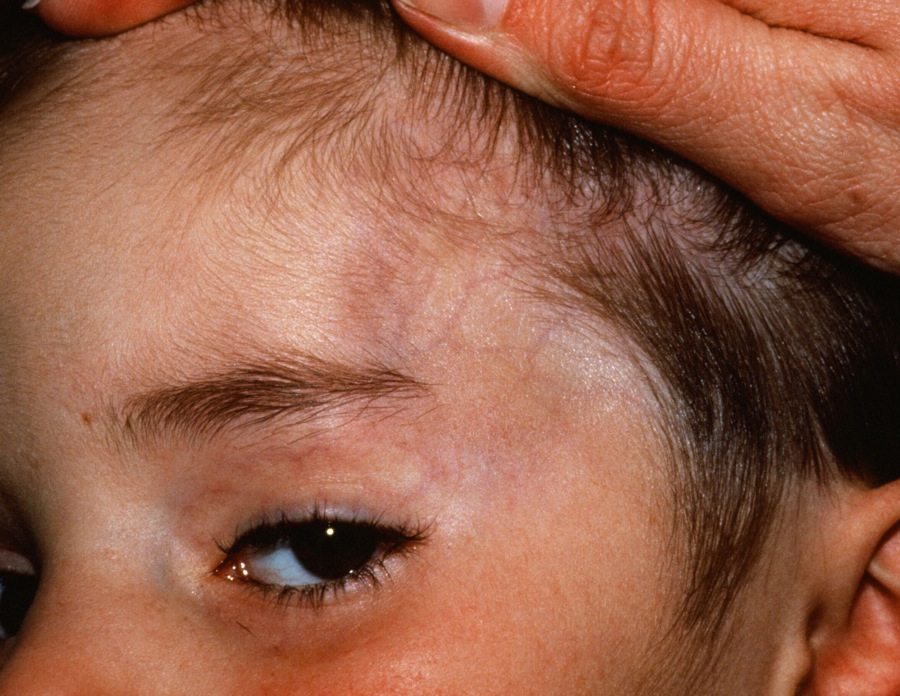
Severe, assymetric, facial atrophy in a child.
PROGRESSIVE HEMIFACIAL ATROPHY (PARRY-ROMBERG SYNDROME)
Progressive Hemifacial Atrophy (PHA), also known as Parry-Romberg syndrome, or Parry-Romberg facial hemiatrophy, is characterized by atrophy of one side of the facial skin with additional variable involvement of the subcutaneous muscle, fat, cartilage, bone, and brain.
- The onset is typically in the first two decades of life.
- This disease may be similar to morphea in a child and some patients have localized scleroderma on other parts of the body.
- En coup de sabre is a related condition.
Clinical
The skin on one side of the face becomes atrophic and may take on a bluish hue. Slow progression is seen over time. There may be ocular complications if the lesion encroaches on the eye. There may be atrophy of the subcutaneous tissue, muscle, and bone with little or no skin involvement. This condition often results in severe facial asymmetry.
Extracutaneous findings:
- CNS: headaches, seizures, trigeminal neuralgia, vascular malformations
- Ocular: vision impairment
- Oral: hypoplasia, difficulty eating,
3D photography has been helpful in detecting response/progression during therapy.
RegionalDerm
Homepage | Who is Dr. White? | Privacy Policy | FAQs | Use of Images | Contact Dr. White
It is not the intention of RegionalDerm.com to provide specific medical advice, diagnosis or treatment. RegionalDerm.com only intends to provide users with information regarding various medical conditions for educational purposes and will not provide specific medical advice. Information on RegionalDerm.com is not intended as a substitute for seeking medical treatment and you should always seek the advice of a qualified healthcare provider for diagnosis and for answers to your individual questions. Information contained on RegionalDerm.com should never cause you to disregard professional medical advice or delay seeking treatment. If you live in the United States and believe you are having a medical emergency call 911 immediately.

